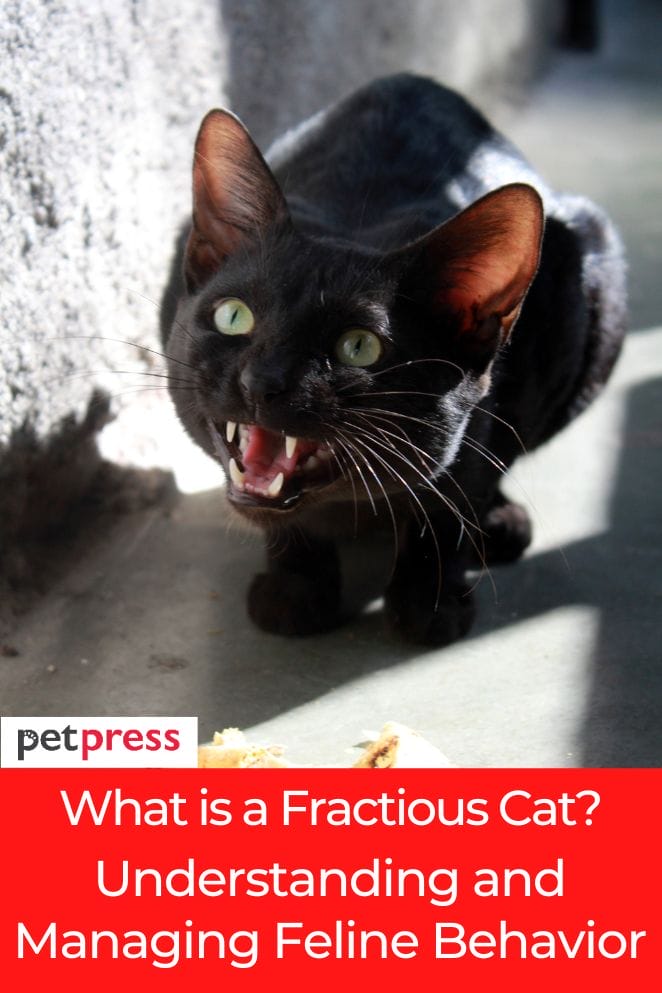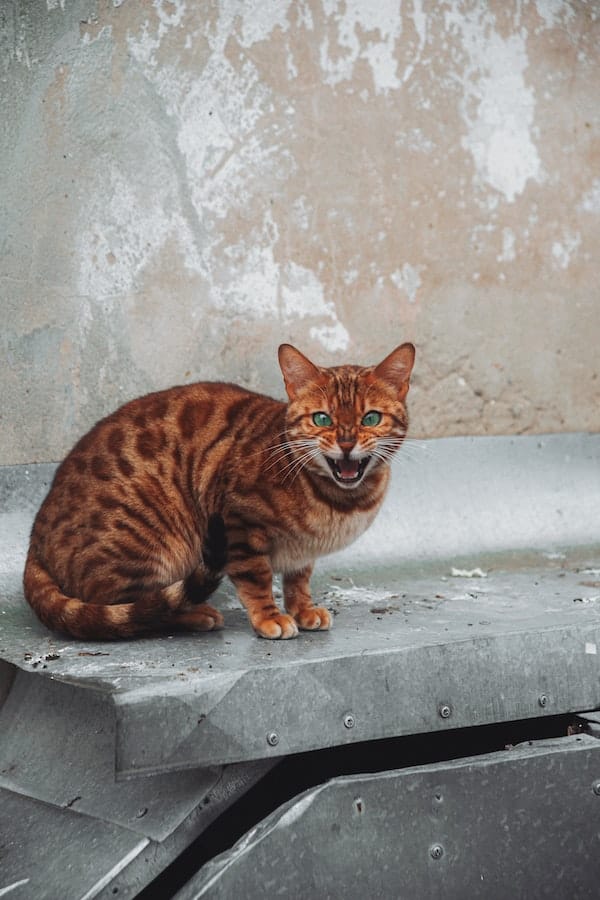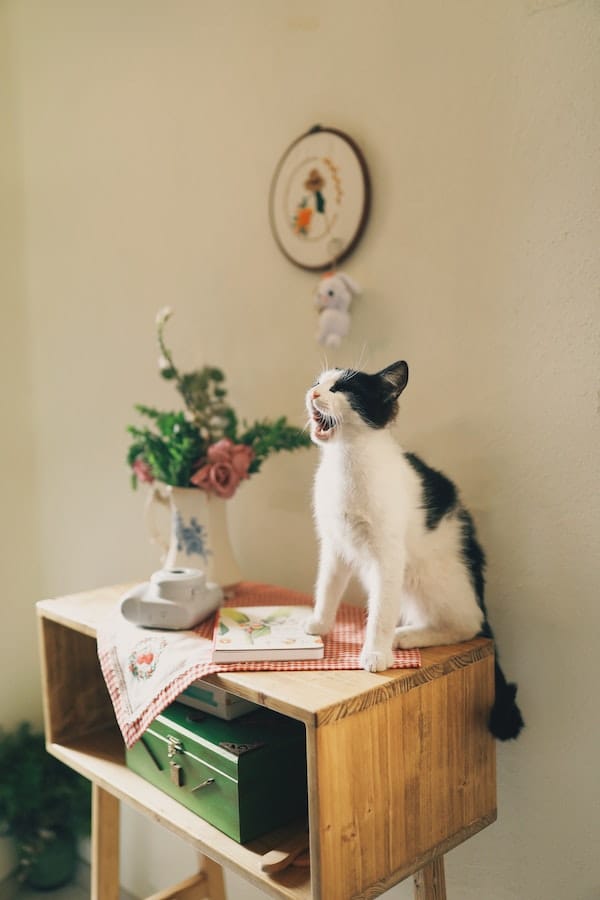
Have you ever encountered a cat whose behavior seems more than just a little feisty?
You might be dealing with a fractious cat.
In this article, we’ll dive into the world of feline behavior, exploring what exactly a fractious cat is, the causes behind their irritable demeanor, and effective strategies to handle and prevent such behavior.
So, let’s unravel the mysteries of these occasionally temperamental but equally intriguing feline companions.
What is a Fractious Cat?
A fractious cat, also known as a difficult or temperamental cat, refers to a feline friend whose behavior is often marked by irritability, aggression, and an overall reluctance to engage positively with humans or other animals.
These cats may exhibit signs such as hissing, scratching, or hiding when approached as if they’ve put up a metaphorical “do not disturb” sign.
Interactions with fractious cats can be more challenging and require patience, understanding, and specialized techniques to build trust and create a positive bond.
Despite their challenging nature, with the right approach and care, even the most fractious cats can learn to feel more comfortable and secure in their environment.
Causes of Fractious Behavior in Cats

There are a variety of reasons why cats behave in certain ways, and understanding the root cause of these behaviors can help owners find solutions that will be best suited for both them and their feline friends.
Common explanations behind fractious behavior include:
Pain or illness
Just like people, cats can get grumpy when they’re not in the best of health.
Recognizing that their actions might be due to hidden discomfort or sickness is really important.
As people who have cats, we need to really notice these hints and give them the care they need.
If we deal with their uneasiness, we can keep a happy bond going and make sure they’re doing alright.
Fear or anxiety
Cats can be easily spooked by unfamiliar situations or people.
Their keen senses and cautious nature make them prone to fear and anxiety.
These emotions can lead to defensive behaviors like hiding, hissing, or scratching.
As a result, cats may seem standoffish, keeping their distance until they feel comfortable and secure.
Past trauma
Cats that have experienced traumatic events, such as abuse or accidents, may carry deep emotional scars that can manifest in various ways, including avoidance, aggression, or excessive fear.
These feline companions require patience, understanding, and a nurturing environment to help them heal and regain trust.
Lack of Socialization
Cats that didn’t receive proper socialization as kittens, such as being exposed to various experiences, environments, and individuals, might struggle to adapt to new situations later in life.
This lack of socialization can result in defensive behavior, where they may feel threatened or anxious in unfamiliar settings or around unfamiliar people.
Inappropriate handling
Cats are highly sensitive creatures with heightened senses and a natural instinct for self-preservation.
Improper handling can trigger their defensive instincts, leading to reactive behavior.
It’s crucial to approach and handle cats with care, respecting boundaries and providing a safe, nurturing environment.
Signs of a Fractious Cat

To identify a fractious cat, watch for these telltale signs:
Hissing, growling, or spitting
These vocalizations, such as hissing, growling, or yowling, are clear indicators of a cat’s discomfort or fear.
When a cat feels threatened or uneasy, it may express its emotions through these distinct sounds, serving as a warning sign to others.
Ears back
When animals tuck their ears flat against their head, it’s a clear sign that they’re feeling defensive and getting ready to guard themselves against possible dangers.
This natural instinct helps them stay super aware, all set to respond quickly and effectively to make sure they stay safe and sound.
Tail poofed up
A tail that’s puffed up, which is also called piloerection, is a classic way cats show they’re sensing a threat, feeling uneasy, or getting worked up.
This behavior is something they do instinctively, like a visual signal to possible dangers, showing that the cat is extra alert and prepared to protect itself if needed.
Fur standing on end
When a cat’s fur stands on end, a phenomenon known as piloerection occurs.
This happens when the tiny muscles attached to each hair follicle contract, causing the hair to stand straight up.
Piloerection is often a visible sign of heightened arousal or fear in cats.
It serves as a natural defense mechanism, making the cat appear larger and more intimidating to potential threats.
Bites or scratches
When a cat senses itself trapped or in danger, it could respond with defensive actions like biting or scratching.
This is part of their natural instincts to safeguard themselves and get away from what they see as a threat.
To avoid such circumstances and have a smooth interaction with our cat pals, it’s key to grasp and honor their limits.
Avoiding contact
Fractious cats, known for their temperamental nature, may actively avoid interactions with humans or other animals.
They prefer to keep to themselves, seeking solitude and independence.
Whether it’s due to past experiences or simply their innate disposition, these feline companions tend to be more aloof and less inclined to engage in social interactions.
Hiding or cowering
Seeking hiding spots is a natural instinct for cats, providing them a safe haven to cope with various stressors.
Whether it’s a quiet corner under the bed or a cozy nook behind the curtains, these secret hideouts offer solitude and a sense of security, allowing cats to recharge and find solace in their own peaceful retreats.
How to Deal with a Fractious Cat

Dealing with a fractious cat requires patience and understanding:
- Approach the cat slowly and calmly to avoid startling them.
- Refrain from sudden movements or loud noises that might exacerbate their anxiety.
- Speak to the cat in a soothing voice to help them feel more at ease.
- Offer a safe place for them to retreat to, such as a covered bed or cat carrier.
- Never force interactions; allow the cat to approach at their own pace.
Tips for Preventing Fractious Behavior in Cats
Taking proactive steps can reduce the likelihood of your cat becoming fractious:
- Create a safe and comfortable environment where your cat feels secure.
- Socialize your cat from a young age to familiarize them with various people, animals, and situations.
- Handle your cat gently and respectfully, avoiding any actions that could be perceived as threatening.
- Avoid rough play that might trigger aggressive behaviors.
- Seek professional help if you observe persistent signs of fractious behavior.
Conclusion
Navigating the intricacies of managing difficult behavior in cats might be demanding, yet it’s essential to acknowledge that these multifaceted beings have their own distinct characters.
By truly comprehending the roots of their conduct, keenly picking up on the subtle cues they display, and employing considerate approaches customized to their specific requirements, you can forge a more profound and meaningful connection with your feline friend.
This, in turn, will establish an atmosphere that nurtures their ease and happiness, ultimately enriching their overall state of being.
FAQs
Yes, with patience, consistent positive interactions, and proper care, a fractious cat’s behavior can often improve.
Fractious behavior can occur in any breed, but individual personality and experiences play a significant role.
Neutering or spaying can help reduce aggression and territorial behaviors, which might contribute to fractious behavior.
Yes, with time and patience, older cats can learn to trust and become less fractious, especially if provided with a positive and secure environment.
Yes, seeking help from a professional cat behaviorist can be beneficial in addressing and managing fractious behavior.


GIPHY App Key not set. Please check settings